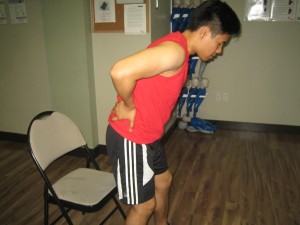Various conditions are capable of causing pain in the side. Flank or side pain manifests in the torso between the upper abdomen and back. The flank pain typically occurs between the lower ribs and the ilia or hip bones and can oftentimes involve these structures as well. The side pain can be mild, moderate or severe, depending on the cause of the condition as well as the tissues involved.
Kidney stones
The kidney stones can cause pain in the side. Kidney stones are made out of minerals and acid salts. The presence of kidney stones is one of the most painful conditions that affect the urinary tract.
When an individual develops more than one kidney stone, other stones are likely to develop. The usual signs and symptoms linked with kidney stones include severe back, groin and flank pain as well as blood in the urine, pain while urinating, nausea, vomiting and the persistent urge to urinate. In case infection is present, an individual with kidney stones can also experience fever and chills. There are also certain risk factors that can increase the risk for kidney stones such as dehydration, being male, obesity and a family history of kidney stones.
Pelvic fractures

Pelvic fractures can cause pain in the side. The pelvis is a ring-like structure of bones at the base of the trunk which protects several digestive and reproductive organs, nerves and blood vessels.
The pelvis also provides attachment points for the muscles in the torso and upper legs. Due to the number of structures in and around the pelvis, a break or fracture of the bones in this area can cause severe bleeding, organ damage or nerve injuries.
The common cause of pelvic fractures includes high-impact injuries such as vehicular accidents or a fall from a great height. The usual signs and symptoms linked with fractures on the pelvis include intense pelvis and side soreness, bruising and swelling in the injured area as well as diminished hip active range of motion. Since pelvis fractures are often triggered by high-impact accidents, other injuries are likely to occur including chest, head and abdomen injuries.
Herpes zoster
Herpes zoster can trigger flank or side pain. It is important to note that herpes zoster or shingles is a sore, blistering rash caused by the varicella-zoster virus. The varicella-zoster virus is the same virus responsible for causing chickenpox.
Even though shingles can manifest in individuals of all ages, there is likelihood that it will develop among individuals over the age of 60, those who had chickenpox before 1 year old and those who have compromised immune systems.
The usual indications linked with herpes zoster include burning or tingling, one-sided pain, painful rash on the back, side and front of the body, chills, abdominal pain, hearing and vision issues, headache and joint pain. In addition, herpes zoster can often heal within 2-3 weeks.
